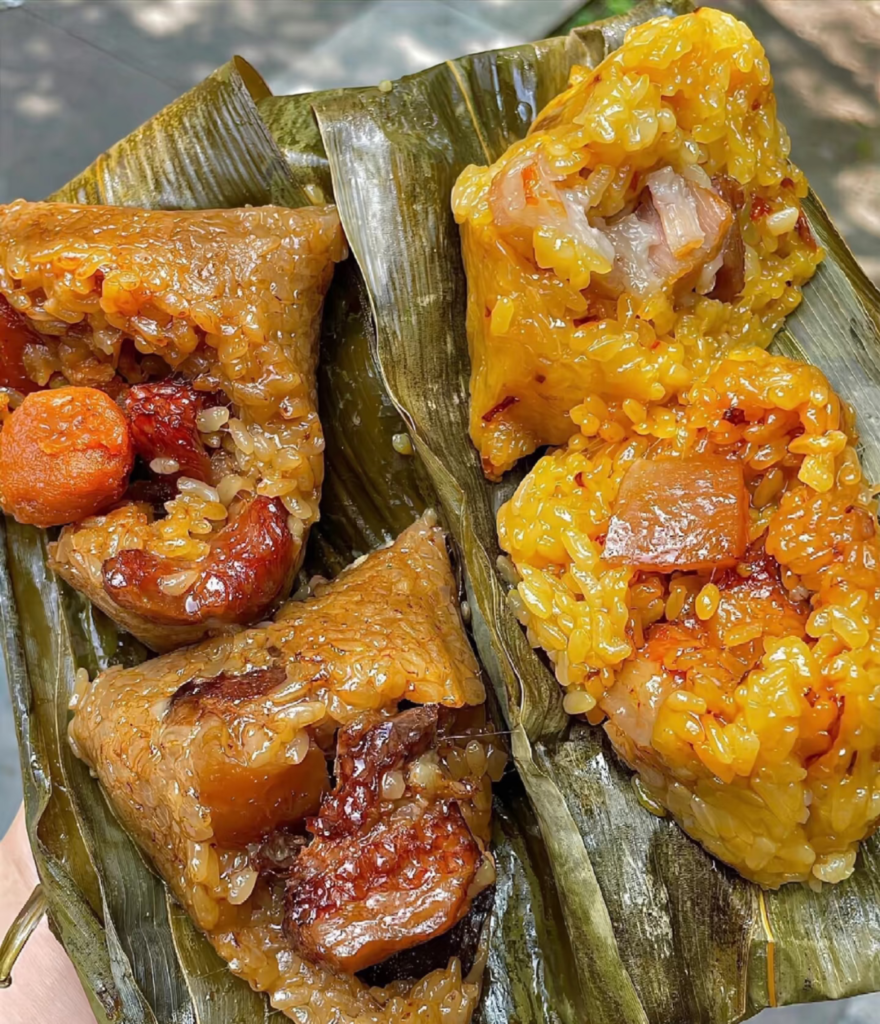As the Dragon Boat Festival approaches, zongzi—fragrant parcels of glutinous rice wrapped in leaves—become one of the most anticipated traditional foods across China. While they may look similar from afar, zongzi from the North and South differ in notable ways, reflecting regional flavors, ingredients, and customs.
How Do the Flavors Differ Between North and South?
Flavor is one of the most immediately noticeable differences. In Northern China, zongzi are predominantly sweet. They are often filled with red dates or sweet bean paste, and many people enjoy dipping them in white or brown sugar for an extra touch of sweetness. Southern zongzi, on the other hand, are typically savory. The glutinous rice absorbs rich fillings such as marinated pork belly or salted egg yolk, creating a deeply satisfying and complex flavor.
What Are the Common Fillings in Each Region?
Northern zongzi tend to have simpler, more uniform fillings, such as red dates, candied fruits, or sweet bean paste. These ingredients emphasize the natural sweetness of the rice. In contrast, Southern zongzi feature a wide array of savory ingredients—braised meats, salted duck egg yolks, dried shrimp, mushrooms, green beans, chestnuts, and more. The result is a multi-layered experience in taste and texture.
What Leaves Are Used for Wrapping Zongzi?
Different types of leaves are used depending on the region, each influencing the final aroma. Northern zongzi are usually wrapped in long, slender reed leaves. These are often layered to hold in the rice and impart a subtle grassy fragrance. Southern zongzi are most commonly wrapped in wide bamboo leaves, known for their sturdiness and their ability to infuse the rice with a stronger, more distinct aroma. Other local leaves like holly or bananawood may also be used in specific regions.
What Shapes Do Zongzi Commonly Take?
The shape of a zongzi often reflects its regional origin. In the North, the shapes are generally consistent—triangular or tilted rectangular—and the size is relatively small. Southern zongzi showcase more variety in both shape and size, ranging from cones and pyramids to long cylinders and torch-like forms. Some Southern zongzi are significantly larger, making them a full meal on their own.
Are There Differences in How Zongzi Are Prepared?
While the core method of wrapping and boiling or steaming remains the same, regional techniques vary. In the North, the preparation is typically straightforward: glutinous rice and filling are wrapped raw and then cooked together. In the South, extra steps are often taken. For example, some regions soak the rice in alkaline water or ash to add chewiness and flavor. Fillings may be pre-cooked, seasoned, or slow-braised, resulting in more intense flavors.
How Do These Differences Compare at a Glance?
Here’s a side-by-side summary of the major distinctions:
| Aspect | Northern Zongzi | Southern Zongzi |
|---|---|---|
| Flavor | Sweet | Savory and rich |
| Fillings | Red dates, bean paste, candied fruits | Pork belly, egg yolk, mushrooms, shrimp, chestnuts |
| Wrapping Leaves | Reed leaves (narrow, mild fragrance) | Bamboo leaves (broad, strong aroma) |
| Shapes | Triangular or rectangular, smaller in size | Cone, cylinder, torch-shaped; often larger |
| Preparation | Simple steaming or boiling of raw ingredients | Complex prep including marination or soaking rice |
FAQ
What is the cultural reason behind the sweet–savory divide?
Regional agriculture, climate, and culinary preferences have shaped the development of zongzi over centuries. Northern regions traditionally favored grains and dried fruits, while the South, with its richer access to seafood and meat, developed more savory versions.
Do people in the South eat sweet zongzi too?
Yes. While savory is dominant in the South, sweet zongzi made with red bean paste or lotus seed paste are also enjoyed, especially by children and as a dessert.
Can you buy both types outside of China?
Absolutely. In international cities with Chinese communities, you’ll often find both varieties available during the Dragon Boat Festival, labeled clearly by flavor.
Are there other regional zongzi worth trying?
Definitely. Beyond the North–South divide, provinces like Guangdong, Hainan, and Hunan have their own unique styles, each offering a new experience in taste, texture, and aroma.
